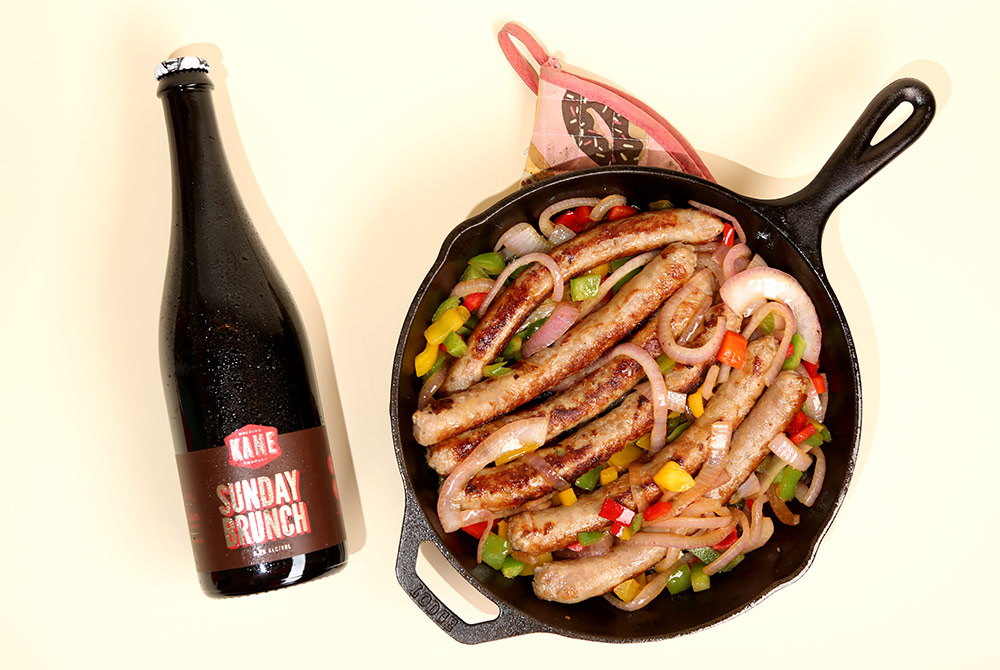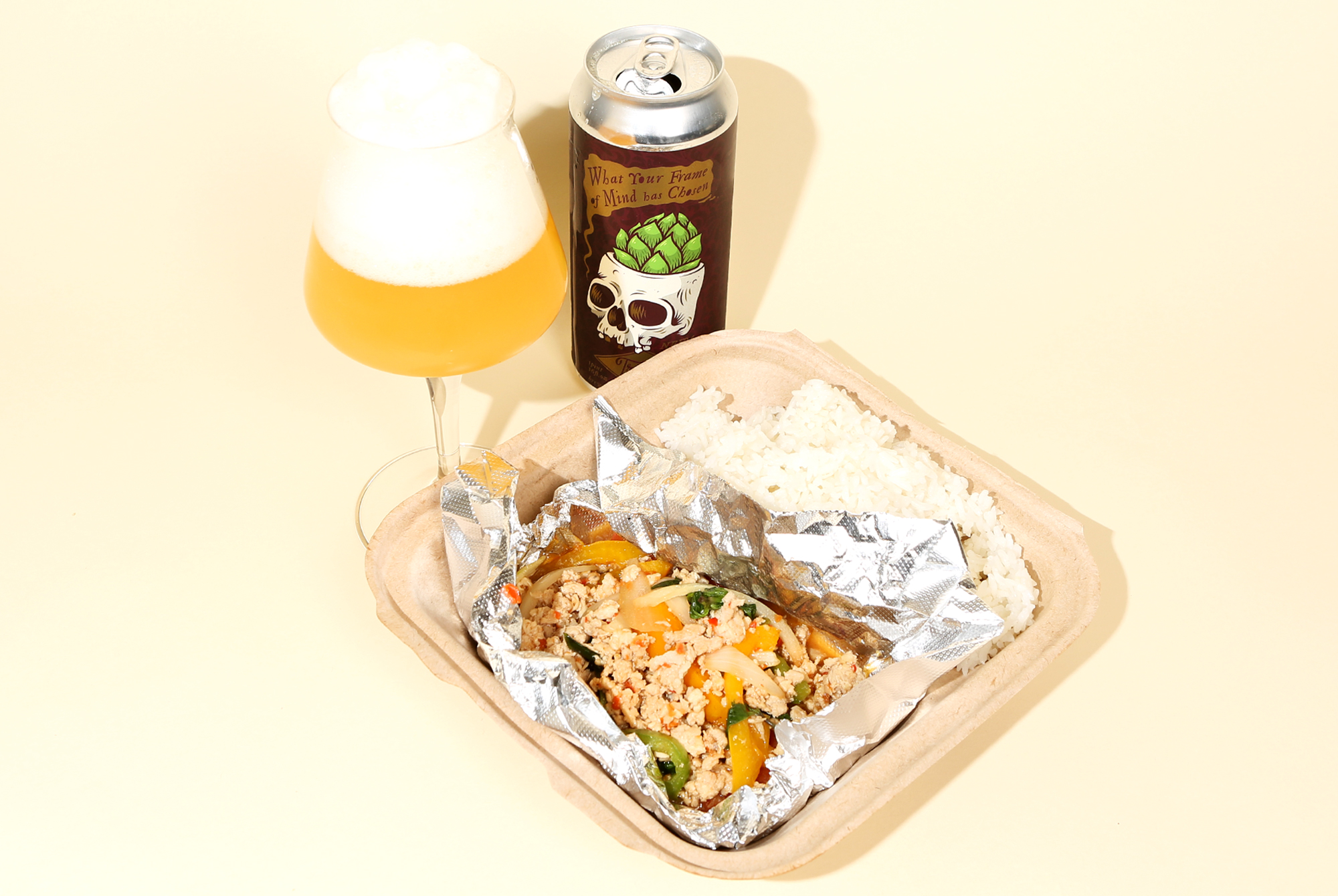Shop
The 5-Minute Guide to Pairing Food With Beer
A cheat sheet to nailing your beer and food pairings.
Interested in This? Read These:
Want to level up your dining experience with a choice beer but struggle with where to start? You’re not alone. I’ll confess, I make no claims to pairing expertise. Apart from a few misguided efforts at doing what “seems right” or what “tastes good,” there’s usually little rhyme or reason to my mealtime beverage choices.
Determined to add some intention to my decisions, I trawled the internet for a couple of foundational principles to get me started. What I found was, well, an overwhelming amount of information to weed through. (Some of it helpful, and some of it––err, less so).
To make sense of all the noise, I asked Mo Bentley, former general manager and kitchen manager of the now-defunct Springdale Beer Co., along with Brayden Volk, operations manager at Hoof Hearted Brewing, for their take on how to approach pairing beer with food. What follows are the fruits of my labors. A dummy’s guide to beer pairing, if you will.
So, when choosing what brew to accompany your food, there are several guiding principles to keep in mind. Above all else, it’s helpful to know your goals. Try to have an idea of whether you want your food-beverage pairing to be a relationship based on complement, contrast, avoiding overpowering, or rule-breaking.
Some Vocabulary For Beer and Food Pairings
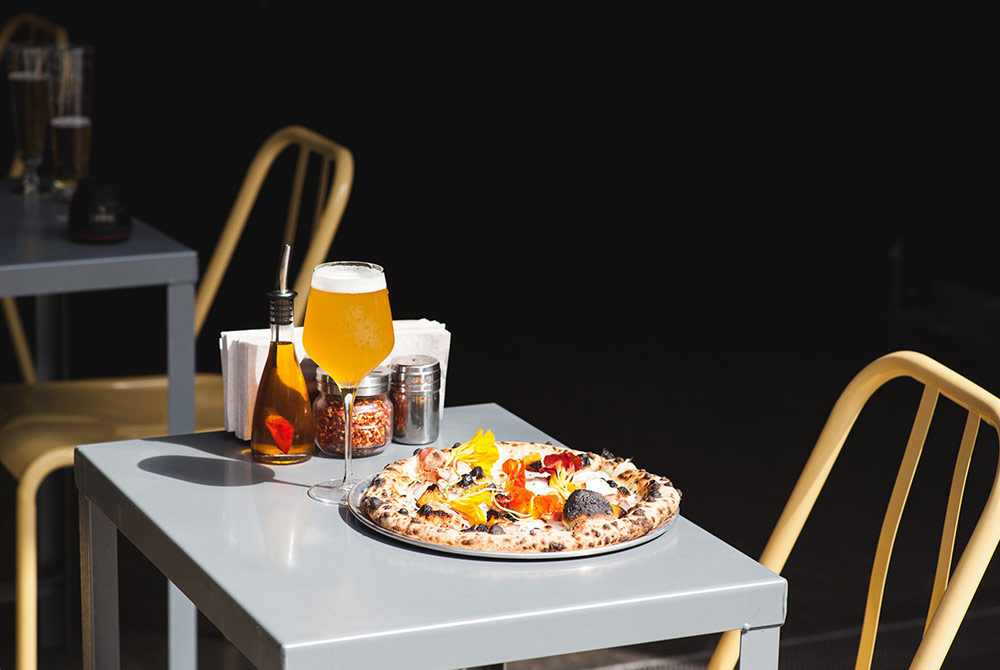
Photography courtesy of Circa Brewing Company
All too often, craft beer aficionados throw around jargon, leaving even the most well-studied among us blank-faced and head-scratching. What does it mean for a beer to have body? Does anyone actually even know what hoppy beer tastes like?
If you’re asking some of these questions, enjoy a quick primer before diving deeper into pairing.
Light: It varies depending on who you ask, but light beers generally have a more golden coloring, a milder flavor, and a crisp and refreshing feel. Lightness has also become a commercial term used to describe caloric content, and it’s no coincidence. Most lighter beers are lower in alcohol content––think pilsners, kölschs, helles, or American lagers.
Dark: As you might expect, dark beers typically have an opaque brown or black coloring, corresponding to their richness and weight. Often, darker beers have thicker consistencies owing to the malt used in the brewing process. In contrast to their lighter counterparts, dark beers also have higher ABVs and calorie contents (most of the time). That said, there are plenty of offerings in the neighborhood of 5% ABV—think dry Irish stout, Czech dark lager, and Vienna lager.
Hops: Hops refer to the flower from the female hops plant used to brew beer. Hops can add an element of bitterness to beer which helps to balance out the sweetness of the grain. Though, to be clear, hops impart various flavors beyond bitter (fruity, funky, dank, earthy, etc.). But, when that regular at the bar refers to a beer as “hoppy,” they mean that they can more clearly taste the beer’s hops (i.e., typically, it’s more bitter). IPAs and pale ales usually have the most notable hop characteristics.
Malt: Malted grains comprise the backbone of most of the beer we drink. As a result, malt content primarily influences a beer’s color and mouthfeel. In contrast to hops, which can add an element of bitterness to beer, malt is often sweeter. Beers with more discernible malt presence include brown ales, stouts, and porters.
Bitterness: Measured in International Bitterness Units (IBUs), bitterness refers to a sharp taste, generally lacking in sweetness. As a general rule of thumb, beers with higher IBUs will be more bitter, but tons of variables go into the final taste, and there are bound to be exceptions.
Mouthfeel: Think of the tactile sensation you experience in your mouth when drinking a beer. Beers with more mouthfeel are those that skew more towards solid. In contrast, beers with less mouthfeel are often gentler, with a less-defined sipping sensation.
Still with me? Good. Now that you’ve got some basics under your belt, read on for a crash course in pairing with food.
Know Your Goals When Pairing
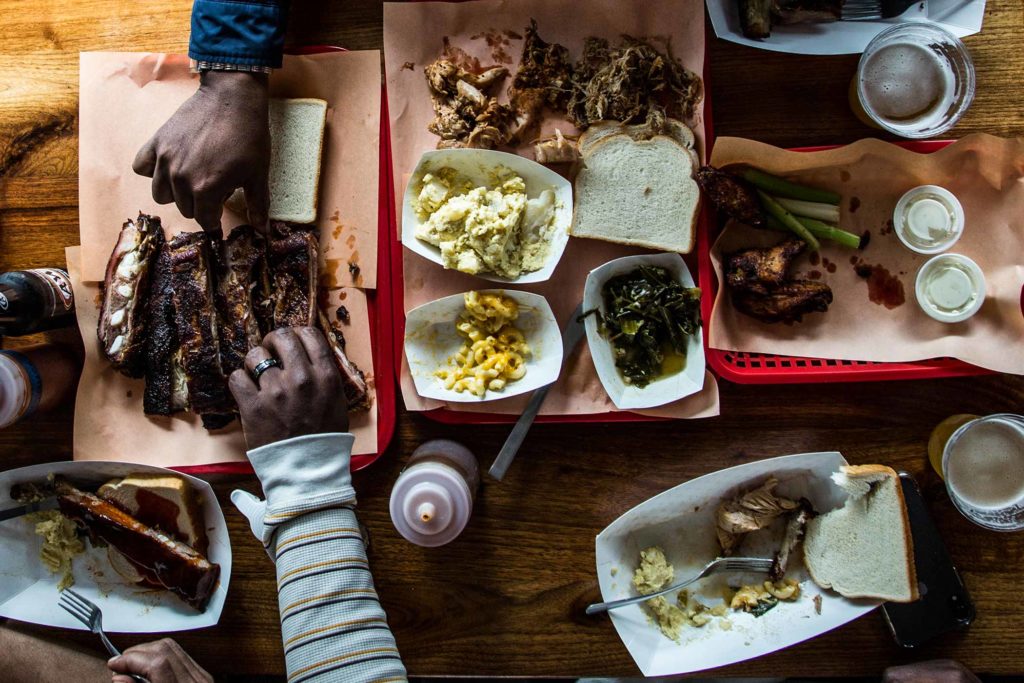
A spread from Rodney Scott’s Whole Hog BBQ | Photography courtesy of Angie Mosier
How can you expect to make informed pairing decisions without a clear idea of what you want to achieve? (After all, you’re reading a pairing guide for a reason.) Have some direction when choosing food and booze; otherwise, you’re apt to lose sight of the end result.
Whether that means carefully matching flavors or opting for opposites.
But at the same time, don’t forget to experiment (see below for more). The best course of action may be to forgo conventional wisdom in favor of something novel.
Complement the Food With Your Beer
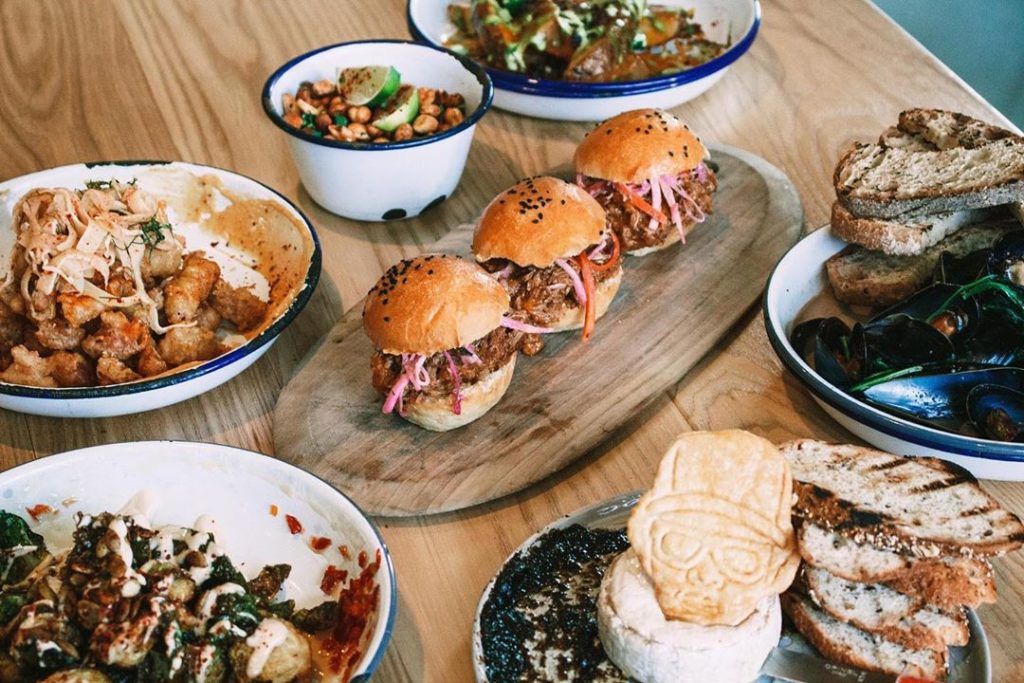
Photography courtesy of Hoof Hearted
For the most part, this one’s pretty intuitive. Think of beers that’ll boost the food’s flavor rather than overpower it. You’re looking for harmony––just like with music, you’ll notice when something’s off-key.
Hoof Hearted’s Volk emphasizes that “there’s been ample experimentation that backs up most of the hard and fast recommendations” and that “matching the weight of the meal with the body of the beer” or “amplifying flavor components of the dish with complementary flavors in beer” would “serve to enhance what could otherwise have been a fairly banal Monday night dinner.”
In other words, people have been eating and drinking for a long time, and there’s good reason to get your food and drinks to cooperate (it tends to work).
For example, Bentley suggests, “If you’re going with seafood or something spicy, or generally lighter food like chicken, you’re gonna want to go for a lighter lager or sour beer.” Sticking to lighter beers with less body will keep you from overwhelming something milder like chicken or fish.
Conversely, Bentley says that “dark beers pair well with smoked meats and sausages and richer desserts”––advice she puts into practice in the form of some dangerous-sounding porter-chili combos and stout brownie mixes.
When Pairing Food, Opposites Attract
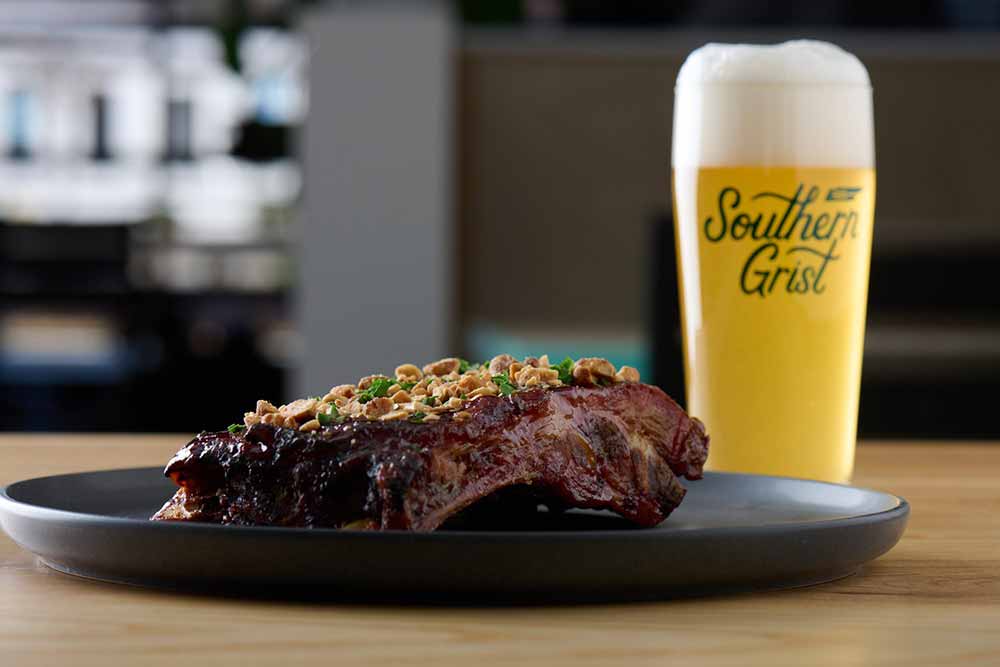
Photography courtesy of Southern Grist Brewing Co.
Contrasting your beer with your food is a bold statement that’ll surely demonstrate your foodie clout. It’s one thing to spring for “like with like,” but something else to pit two opposing flavors against each other (and make it work).
When choosing this option, pick out a strong flavor you wish to highlight because that’ll be what gets most of the spotlight. Bentley suggests pairing a “fatty seafood dish with a hoppy IPA” because the “beer will cut through the fat,” providing “balance to the hops’ bitterness.”
Where these flavors might be too much on their own, exploiting their differences allows you to make them manageable. That said, they must be strong enough to stand up to your pairing––pick something too mild, and it’ll get lost.
Play it Safe––Avoid Overpowering Your Pairings
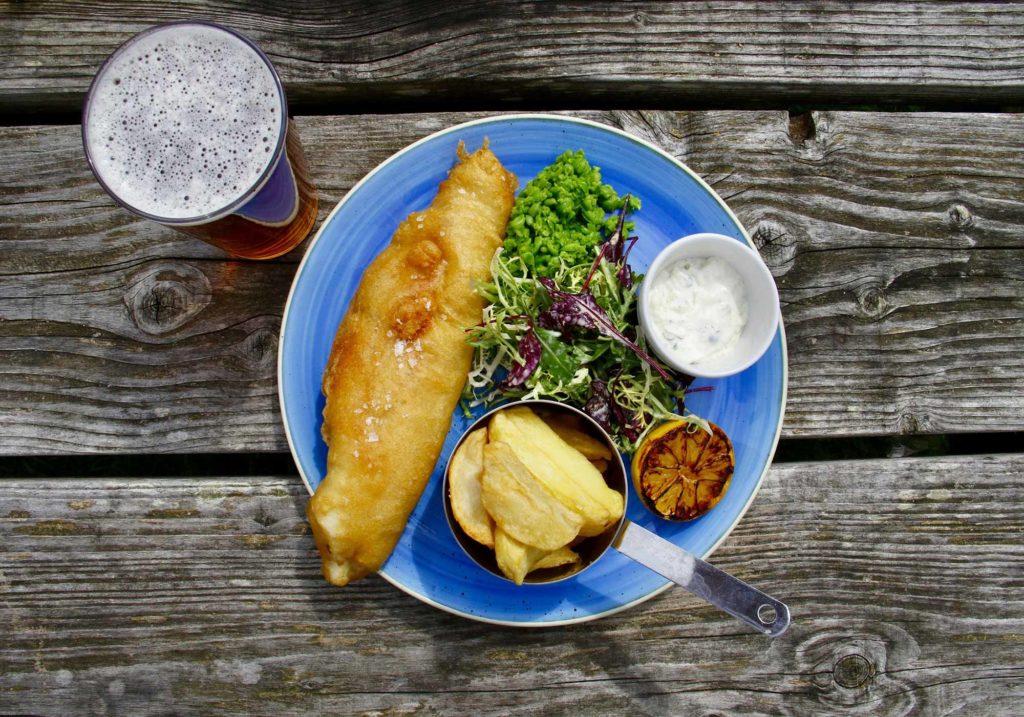
Photography courtesy of Nick Fewings
But what about those times when you’ve plated up dinner only to discover that you’ve got nothing but a half-finished 6-pack of some less-than-ideal beer? Even if you’re not shooting for a perfect match, you want to be sure you’re picking flavors that won’t clash. Besides, sometimes, “not standing out” is just enough to get by.
When in doubt, Bentley suggests keeping a stock of fan-favorites like Jacks Abby’s Post Shift Pilsner, a beer she says “can be used as a batter for fish and chips,” but is also one that goes well with “breads and creamy risottos” and “can be great on its own.”
With something on the milder side, like a lager or a pilsner, you’re less likely to create an offensive combination. It may not be a match made in heaven, but it’ll get you by in a pinch.
When All Else Fails, Break the Rules
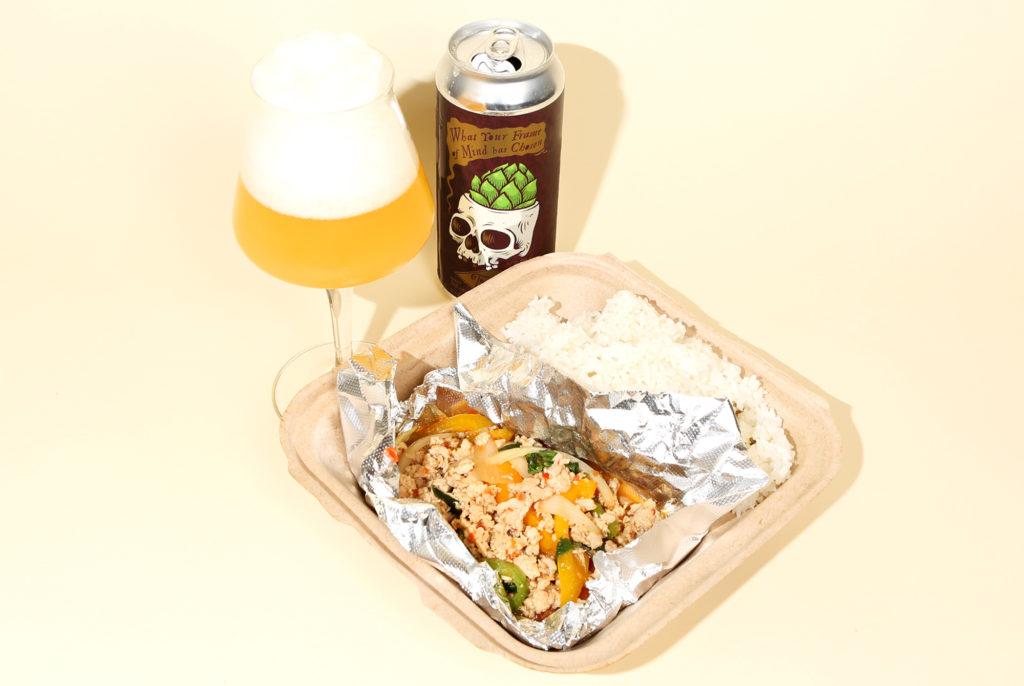
Photography courtesy of John A. Paradiso
Having acknowledged the place for principle in pairing beer with food, Volk also says, “To those who really like to get down, just remember that rules are meant to be broken. Because something is in print from your favorite aficionado does not mean there’s a lack of alternative routes you can take to land yourself in Flavortown v2.”
Yep, as luck would have it, sometimes the best way forward is to disregard everything (including the above guidelines) and forge anew. You know your palate best, so don’t be afraid to get risky or take chances. Ultimately, they’ll not always pan out, but when they do––enjoy the satisfaction of discovering something wholly your own.
Thanks to a few years where no one ventured beyond their apartment, Bentley noticed that “people are tending to be a little more experimental with what they’re cooking at home, using what they’ve got.” This also means they’re bound to make some bolder pairing decisions. As they say, necessity is the mother of all invention.
Ultimately, Volk was full of encouragement for the would-be pairer, noting that “some of the best experiences we’ve ever had have come from working with great chefs … that either bend, amend, or eschew the ‘rules’ altogether in hopes of achieving something a little more than your obligatory Roast Duck with Westmalle 8.”
But for the record, Volk says he’s “totally into Roast Duck with Westmalle 8.”
Liked this article? Sign up for our newsletter to get the best craft beer writing on the web delivered straight to your inbox.

